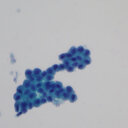Low temperature-induced DNA hypermethylation attenuates expression of RhAG, an AGAMOUS homolog, and increases petal number in rose (Rosa hybrida).
Kulcsszavak
Absztrakt
BACKGROUND
Flower development is central to angiosperm reproduction and is regulated by a broad range of endogenous and exogenous stimuli. It has been well documented that ambient temperature plays a key role in controlling flowering time; however, the mechanisms by which temperature regulates floral organ differentiation remain largely unknown.
RESULTS
In this study, we show that low temperature treatment significantly increases petal number in rose (Rosa hybrida) through the promotion of stamen petaloidy. Quantitative RT-PCR analysis revealed that the expression pattern of RhAG, a rose homolog of the Arabidopsis thaliana AGAMOUS C-function gene, is associated with low temperature regulated flower development. Silencing of RhAG mimicked the impact of low temperature treatments on petal development by significantly increasing petal number through an increased production of petaloid stamens. In situ hybridization studies further revealed that low temperature restricts its spatial expression area. Analysis of DNA methylation level showed that low temperature treatment enhances the methylation level of the RhAG promoter, and a specific promoter region that was hypermethylated at CHH loci under low temperature conditions, was identified by bisulfite sequencing. This suggests that epigenetic DNA methylation contributes to the ambient temperature modulation of RhAG expression.
CONCLUSIONS
Our results provide highlights in the role of RhAG gene in petal number determination and add a new layer of complexity in the regulation of floral organ development.
CONCLUSIONS
We propose that RhAG plays an essential role in rose flower patterning by regulating petal development, and that low temperatures increase petal number, at least in part, by suppressing RhAG expression via enhancing DNA CHH hypermethylation of the RhAG promoter.


